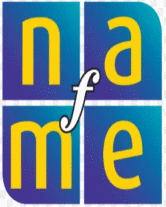Student Use of Technology
Students can create (compose) original background sounds for classroomreadings and dramatizations. There are software programs designed to be usedspecifically by young children. With these programs music can be composed usingnon-traditional means such as drawing lines to compose a melody. Students canarrange a piece of music using the MIDI sequencer to change timbres. They can alsoexperiment with different combinations of sounds using a MIDI sequencer to alterthe elements and characteristics of the music. Melody, harmony, rhythm, timbre,and form, can be isolated, changed, and elements such as ritards, accelerandos, andcrescendos can be created and controlled.
Notation software enables students to compose or arrange for voices and/orinstruments. It provides a way to listen to a composition as it is being composed andprint legible scores and parts. Compositions using a variety of instruments andranges can be enhanced by using notation software. Students can play back theircompositions using a variety of timbres. Notes can be entered in step time or realtime.
Students can use software for editing and storing custom sounds. They cancreate and edit sounds for their compositions and arrangements. Some notationsoftware have the built-in capability to manipulate music in many ways such asretrograde, inversion, augmentation, and diminution. With notation or MIDIsequencing programs, music can be copied and pasted into other parts ofcompositions creating musical forms such as ABA, AABA, and Rondo.
With an electronic controller and sound source (module), sounds can becreated, edited, and stored. Some MIDI sequencing programs can generate time codeused when synchronizing MIDI sequences with video and film. This software can beused to compose music to accompany videos and movie soundtracks. Using a MIDIsequencer with digital audio capability, sounds can be recorded and digitally editedfor analysis or playback.
Student Activities for Standard #4
4.01 The student creates sound effects to accompany readings and dramatizations using an electronic sound source (MIDI keyboard, MIDI controller).
4.02 The student composes original compositions using software designed for younger students or non-music readers.
4.03 The student changes the timbres of one or more parts in a prerecorded MIDI sequence.
4.04 The student demonstrates the elements of music using a MIDI sequencer.
4.05 The student arranges pieces for various voices or instruments using a notation program.
4.06 The student composes pieces demonstrating the ranges of traditional instruments using a notation program or MIDI sequencing software.
4.07 The student records music in step time and real time using a MIDI sequencer or music notation program.
4.08 The student creates compositional forms using a sequencer or notation program.
4.09 The student creates, edits, and stores sounds using a MIDI instrument, a sound source, and editor/librarian software.
4.10 The student composes music using algorithmic composition software.
4.11 The student records a MIDI sequence and synchronizes it with a movie soundtrack, film, or video.
4.12 The student records and edits acoustic sounds using digital sound editing software.
Teacher Use of Technology
Teachers can create musical examples with a MIDI sequencer. For example, asequence can play every part with the melody muted. Students can then compose amelody over the existing sequence. When teachers create custom examples forstudents, the compositional process is enhanced. Teachers can also create musicallyexpressive sequences using MIDI controllers. Quality sounding sequences can beused to teach beginning and advanced compositional techniques. Some MIDIsequencers allow for complex editing, mixing, and digital audio. These tools can beused by teachers to create exercises to help students compose and arrange musicwithin specified guidelines.
Teacher Strategies for Standard #4
4.13 The teacher creates multi-timbral musical examples using a MIDI sequencer.
4.14 The teacher creates musically expressive MIDI sequences using appropriate MIDI controllers.
4.15 The teacher edits and performs complex mixing processes, and integrates digital audio with MIDI sequences.
Excerpted fromTechnology Strategies for Music Education.

| Provided in partnership with NAfME |





